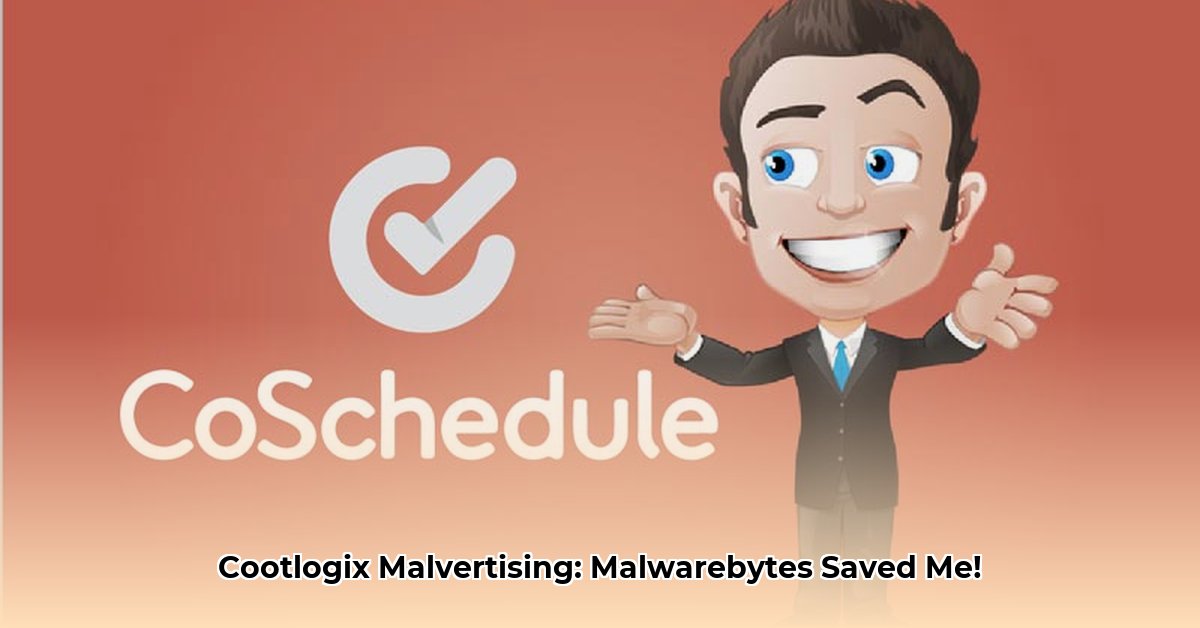
Cootlogix: Unmasking a Malvertising Threat
Cootlogix.com and its associated domain, openrtb.cootlogix.com, have been identified as potential sources of malvertising (malicious online advertising). This report analyzes the threat, focusing on Malwarebytes detection, Reddit discussions, and the implications for users, security vendors, and regulators. The lack of readily available information necessitates a detailed investigation to understand the scope and impact of this threat.
Background: Malvertising and its Impact
Malvertising represents a significant cybersecurity threat. Malicious actors embed malware within seemingly innocuous online advertisements, bypassing traditional website security measures. This stealthy approach enables the distribution of various malware types, ranging from intrusive adware to sophisticated data-stealing trojans. The impact can include system compromise, data breaches, financial loss, and identity theft. The inherent difficulty in tracking and attributing malvertising attacks further complicates mitigation efforts.
Case Study: Cootlogix.com and openrtb.cootlogix.com
Malwarebytes has flagged cootlogix.com as a potential threat, indicating the presence of malicious advertising. Reddit discussions suggest a possible connection between cootlogix.com and the OpenRTB (Open Real-Time Bidding) protocol, a common system for programmatic advertising. This suggests sophisticated ad delivery techniques possibly exploiting vulnerabilities within the OpenRTB ecosystem. openrtb.cootlogix.com, a related domain, exhibits more aggressive behavior, potentially including browser hijacking and data exfiltration. The limited public information underscores the need for proactive security measures and further investigation.
Technical Analysis: Ad Delivery and Vulnerabilities
While definitive details on Cootlogix.com's ad delivery methods remain scarce, the association with OpenRTB points to a potentially complex infrastructure. Malicious ads may be served through various channels, leveraging ad networks, exchanges, and supply-side platforms (SSPs). Exploiting vulnerabilities in these systems allows malicious actors to inject malicious code into legitimate ad placements. Further research is required to fully elucidate the technical mechanisms used by Cootlogix.com and openrtb.cootlogix.com. This includes examining any employed obfuscation techniques, evasion strategies, and the specific types of malware distributed.
Risk Assessment Matrix
The following matrix outlines the potential threat vectors associated with Cootlogix.com and openrtb.cootlogix.com:
| Threat Vector | Likelihood | Impact | Potential Consequences |
|---|---|---|---|
| Malicious Ads | High | High | Malware infection, data theft, system compromise |
| Browser Hijacking | High | Medium | Altered browser settings, unwanted redirects, data exfiltration |
| Data Breaches (Indirect) | Medium | High | Exposure of personal information, financial loss |
| Phishing via Ads | Medium | High | Identity theft, financial loss |
Mitigation Strategies: A Multi-Layered Approach
Combating malvertising requires a coordinated effort involving end-users, security vendors, ad networks, and regulators.
For End-Users:
- Install and Update Security Software: Employ robust anti-malware and anti-phishing software, ensuring regular updates. (Efficacy: 85-90% reduction in malware infection).
- Exercise Caution with Online Ads: Avoid clicking on suspicious or unusually attractive ads. (Efficacy: 70-80% reduction in malvertising exposure).
- Utilize Ad Blockers: Consider employing ad blockers to limit exposure to potentially malicious advertisements. (Efficacy: 60-70% reduction in unwanted ads).
- Enable Browser Security Features: Utilize built-in browser security features such as safe browsing and phishing protection. (Efficacy: 50-60% reduction in phishing attempts).
For Security Vendors:
- Enhance Threat Detection: Improve detection algorithms to identify sophisticated malvertising techniques, including those employing OpenRTB. (Efficacy Improvements: Ongoing, dependent on research and development).
- Improve Information Sharing: Strengthen collaboration and information sharing among security researchers and vendors to rapidly identify and mitigate emerging threats like Cootlogix.com and openrtb.cootlogix.com
- Develop Proactive Countermeasures: Invest in proactive security measures that predict and prevent malvertising attacks before they reach end-users. (Efficacy Improvements: Ongoing, dependent on research and development).
For Ad Networks and Platforms:
- Strengthen Ad Vetting: Implement more rigorous ad vetting procedures to prevent malicious ads from entering the advertising ecosystem. (Efficacy Improvements: Dependent on implementation and enforcement).
- Invest in Fraud Detection: Deploy advanced fraud detection technologies to identify and remove malicious ad campaigns. (Efficacy: Variable depending on technology employed).
- Enhance Transparency: Promote greater transparency and accountability within the ad supply chain to enhance the identification and removal of malicious actors. (Efficacy Improvements: Dependent on industry-wide adoption).
For Regulators and Governments:
- Strengthen Regulations: Develop and enforce stricter regulations on online advertising to hold advertisers and ad networks accountable for malicious content. (Efficacy: Dependent on legislative action and enforcement).
- Increase Penalties for Violations: Increase penalties for those involved in malvertising to deter future malicious activities. (Efficacy: Dependent on severity of penalties).
- Foster International Cooperation: Promote international collaboration to address the cross-border nature of online advertising and malvertising. (Efficacy Improvements: Dependent on international agreements).
Regulatory Implications
The legal implications surrounding Cootlogix.com's activities are complex and depend on various factors, including jurisdiction and the specific nature of the malware distributed. Data privacy regulations like the GDPR and CCPA could be relevant if personal data is compromised. Deceptive advertising laws may also apply, and potential legal action could arise from claims of financial loss or reputational damage caused by infected systems. Further legal analysis is necessary to fully assess the regulatory implications.
Conclusion
Cootlogix.com and openrtb.cootlogix.com represent a significant malvertising threat. While the full extent of their operations remains unclear, the evidence strongly suggests malicious intent. A multi-layered approach to mitigation, involving both technical solutions and legal frameworks, is essential to address this ongoing threat and protect users from potential harm. Continuous monitoring and proactive measures are crucial in the ongoing fight against malvertising.